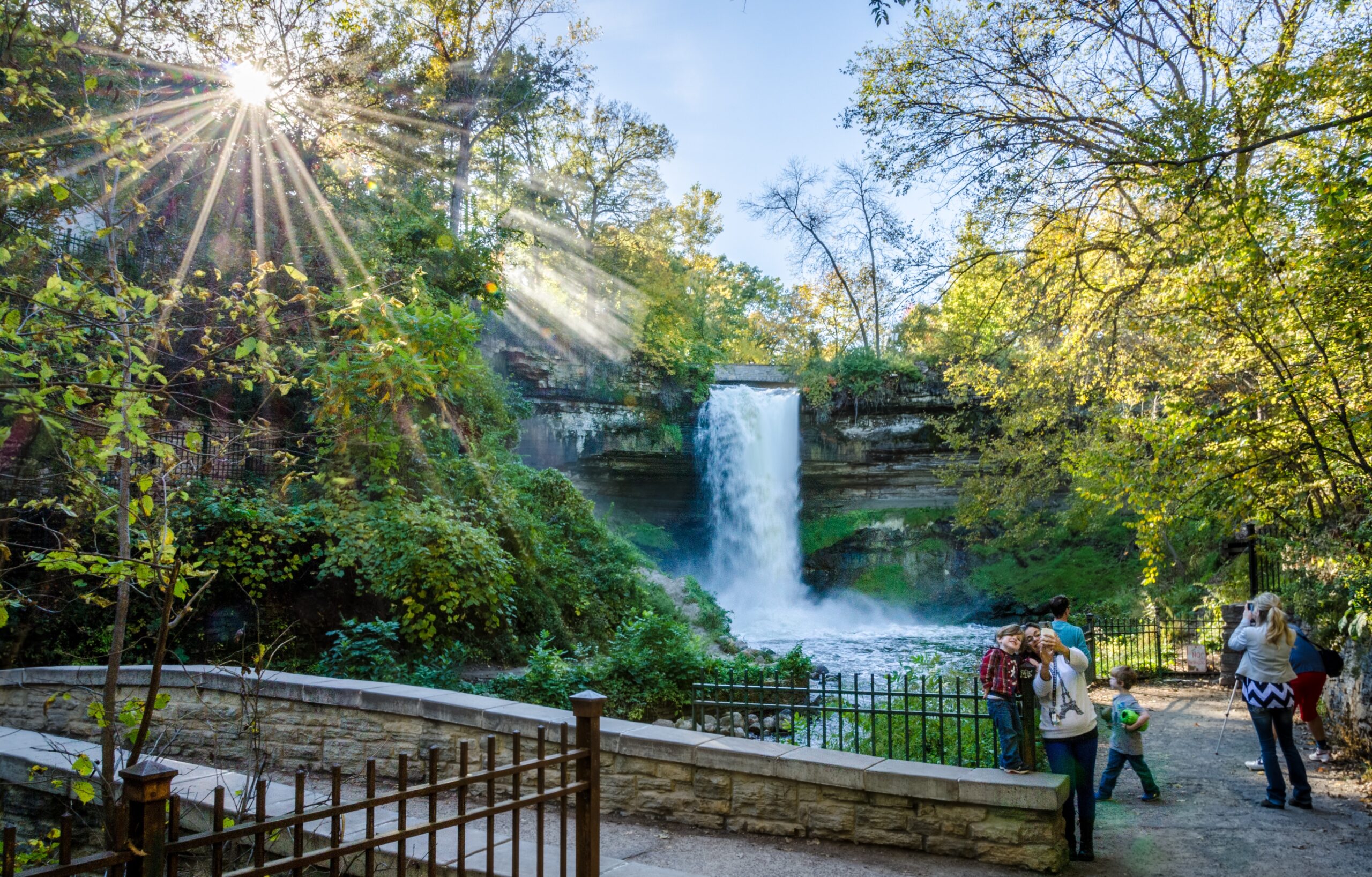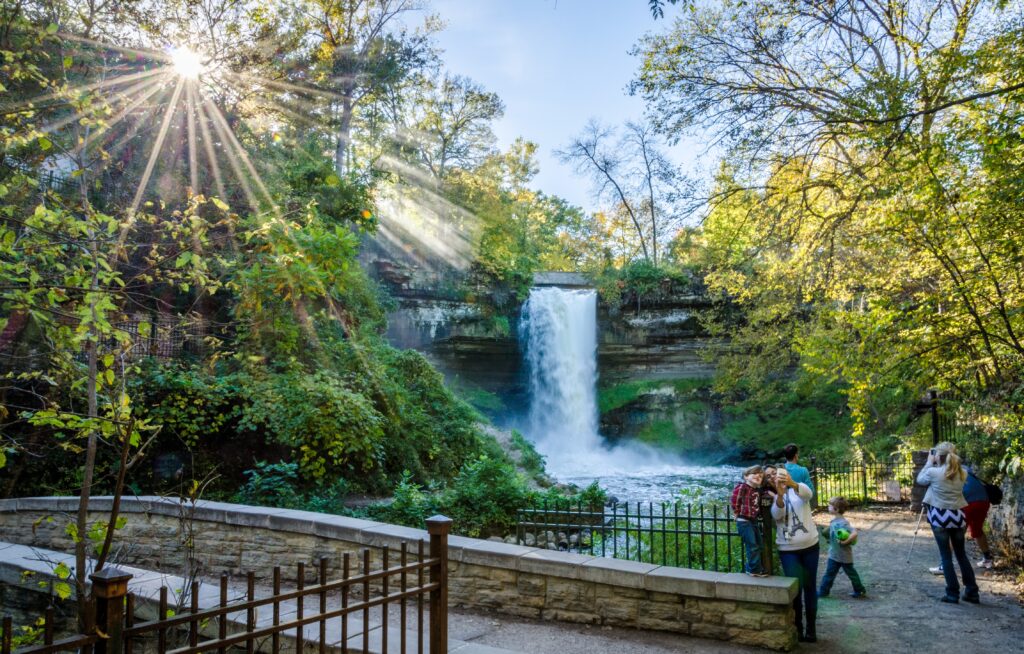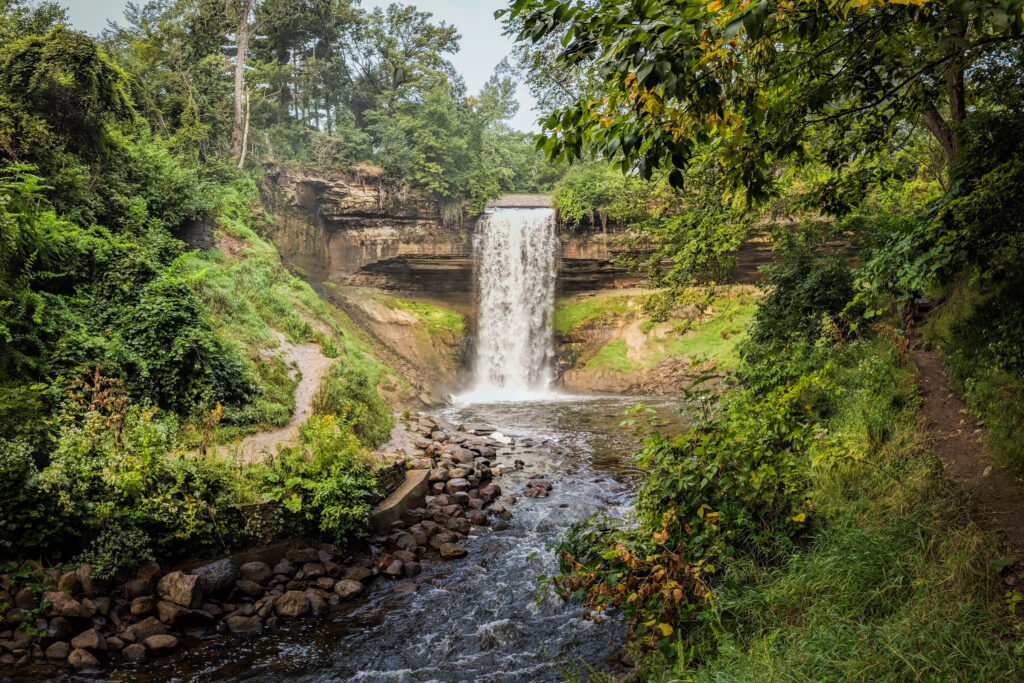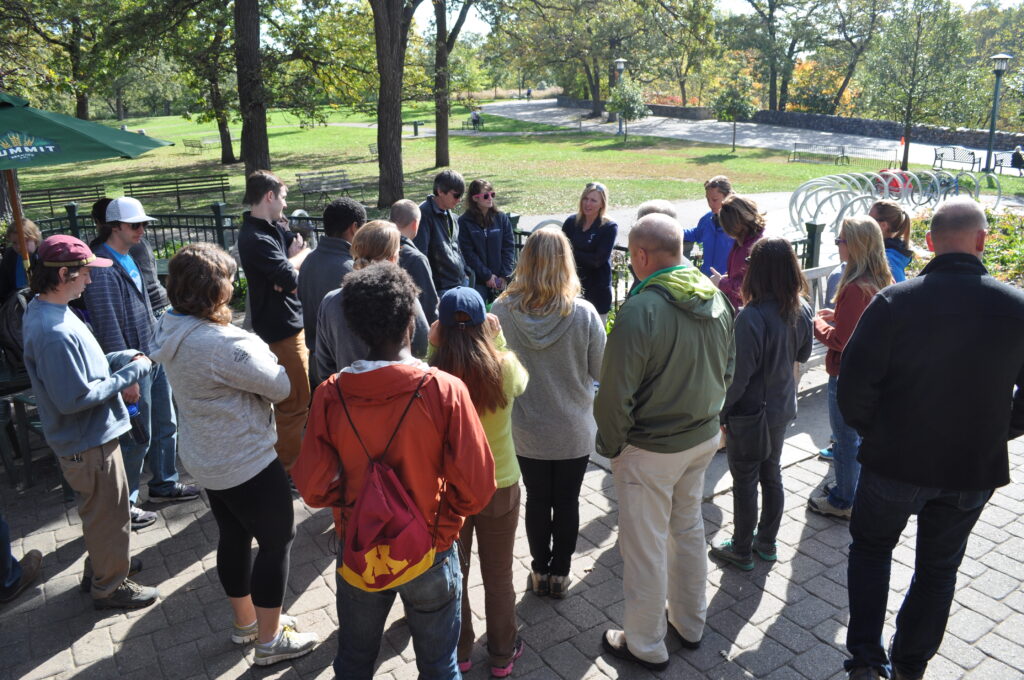
Minnehaha Falls and Glen Restoration

Overview
The Minnehaha Creek Watershed District (MCWD), partnered with the Minneapolis Park and Recreation Board, the Minneapolis Veterans Home, the State of Minnesota, and the U.S. Army Corps of Engineers to implement a three-phase, multi-year project to construct a series of improvements at Minnehaha Falls, a site that garners more than 850,000 people each year. MCWD approached this project by focusing on three key areas: improving park infrastructure, restoring eroded streambanks, and managing stormwater at the nearby Minnesota Veterans Home.
In 2005, a severe storm event resulted in extensive damage to the Minnehaha Falls and Glen area, including damage to the limestone retaining walls and steps built during the Works Progress Administration of the 1930s. The storm also eroded trails, washing sediment into the creek and degrading water quality where there are sensitive plant communities. When it rained, stormwater runoff from the Minneapolis Veterans Home campus above Minnehaha Falls poured into the gorge through stormwater pipes, washing away the stream banks and endangering the site’s historic elements, including the ruins of the 1857 Ard Godfrey Mill, Minnesota’s first known flour mill. Structural failures, erosion problems, stormwater management issues, and other problems threatened historic, cultural, and natural resources in the Minnehaha Falls and Glen area and at the Minnesota Veteran’s Home, necessitating action by the District and its agency partners.

Project Timeline

Planning Phase
Planning Phase
2004 — Stream assessment conducted to identify specific issues in the park
2005 — Major storm event caused expedited deterioration of streambank

Design Phase
Design Phase
2007 — MCWD designs stormwater features at Minnesota Veterans Home property
2007 — MCWD and MPRB held public meeting to discuss improvements at the project site

Construction Phase
Construction Phase
2010 — Construction begins
2011 — Construction complete

Project completion
Project Completion
2011 — Project completed
By the Numbers
600
feet
of streambank stabilized
6
stormwater management systems
installed at MN veteran’s home
4
sections
of Minnehaha Creek streambank restored
1,100
feet
of elevated trail installed
Project Highlights
- Added and reinforced existing retaining walls
- Restored and stabilized streambanks and bluffs
- New natural limestone seating areas
- Improved trails and walking paths
- Invasive species removal and management
- Native plants
- Improved water quality from stormwater treatment
- Added bridge abutment protection
We appreciate the great care that was taken during the project to preserve the site’s unique heritage and historical significance. Minnehaha Falls is a jewel in the Minneapolis parks system and we’re grateful to have this historic and cultural resource preserved for generations to come.
– Michael P. Schmidt, MPRB Assistant superintendent of operation services
Partnership
MCWD worked with the Minneapolis Park and Recreation Board (MPRB), the Minneapolis Veterans Home, the State of Minnesota and the U.S. Army Corps of Engineers to fund a three-phase multi-year project to restore the gorge.











